Transform your home, elevate your decor, and nurture your space with open terrariums. You can easily craft these mini ecosystems to bring nature indoors, using simple containers like glass bowls or jars. Start with a 2-inch layer of pebbles for drainage, then add 1-2 inches of activated charcoal to prevent mold—a key step for plant health. Curious about specific designs like a cactus bowl or fairy garden? Stick around for inspiring ideas.
Contents
- 1 Minimalist Glass Bowl Terrarium
- 2 Rustic Wooden Box Display
- 3 Hanging Orb Green Haven
- 4 Vintage Teacup Mini Garden
- 5 Modern Geometric Container Design
- 6 Desert-Inspired Succulent Setup
- 7 Tropical Fern and Moss Escape
- 8 Whimsical Fairy Garden Scene
- 9 Coastal Pebble and Air Plant Mix
- 10 Upcycled Jar Nature Nook
Minimalist Glass Bowl Terrarium
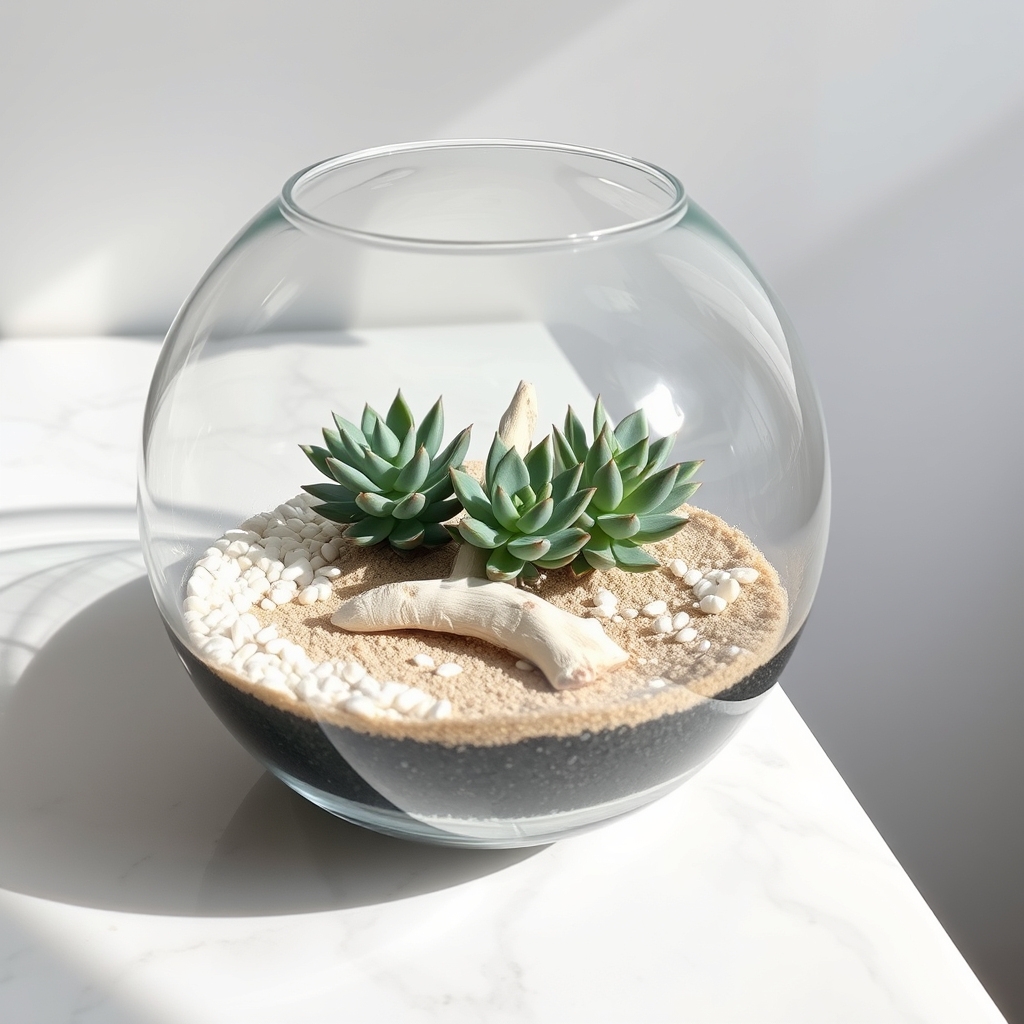
A minimalist glass bowl terrarium is a simple yet elegant way to bring a touch of nature into your home or office. This type of terrarium typically features a clear glass bowl as the container, allowing for a full view of the miniature ecosystem inside. Its design focuses on clean lines and minimal components, making it an ideal choice for those who appreciate understated beauty and low-maintenance decor.
To create a minimalist glass bowl terrarium, start with a layer of pebbles or gravel at the bottom for drainage, followed by a thin layer of activated charcoal to keep the environment fresh. Add a layer of potting soil, then carefully arrange a few small, slow-growing plants such as succulents, air plants, or moss. The key is to avoid overcrowding, ensuring each element has space to stand out. Finish with a few decorative rocks or a single piece of driftwood for a polished, uncluttered look.
This style of terrarium thrives in bright, indirect light and requires minimal watering, making it perfect for busy individuals or small spaces. Its open design allows for easy access and care, while the transparency of the glass bowl enhances the visual appeal, showcasing the natural textures and colors of the plants and materials within.
Rustic Wooden Box Display
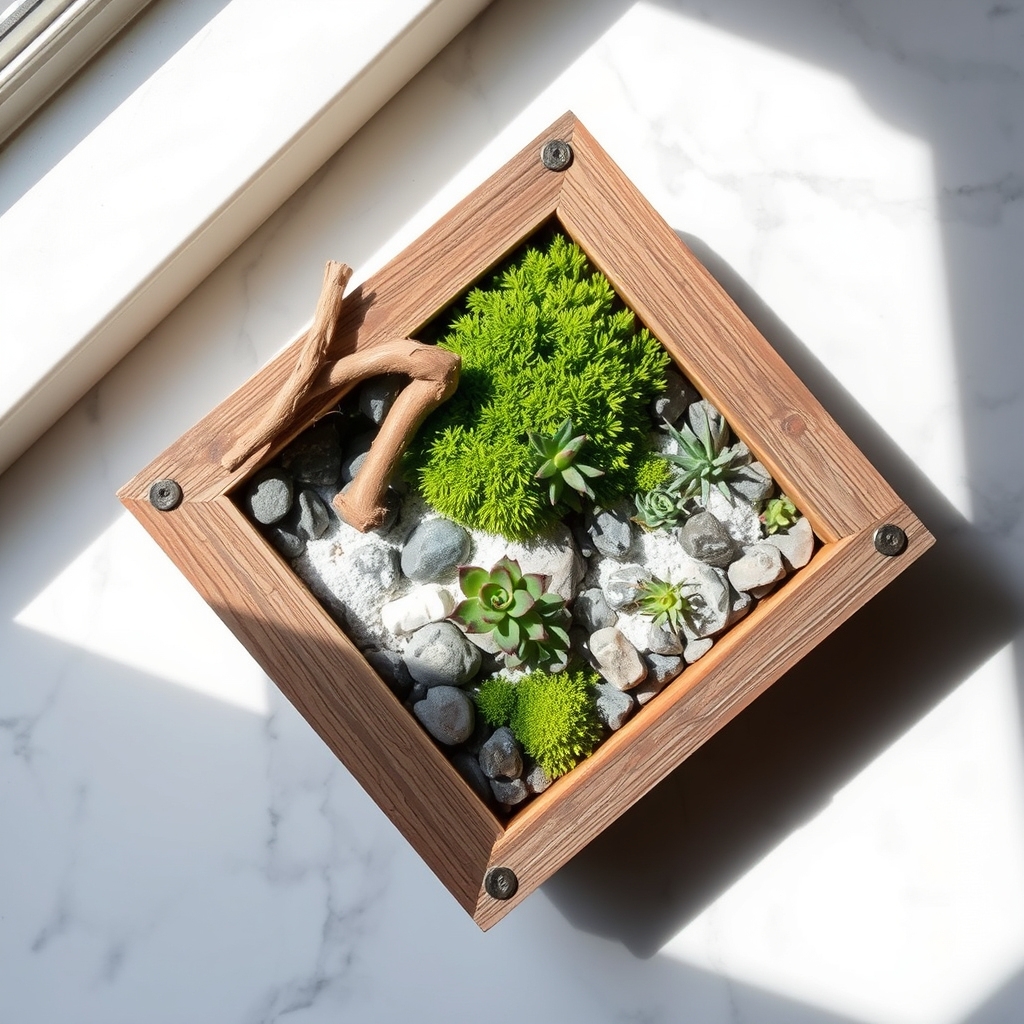
A rustic wooden box display offers a charming and natural way to showcase an open terrarium. This style of container brings a touch of vintage or farmhouse aesthetic to your indoor or outdoor space, blending seamlessly with natural elements like moss, succulents, and small pebbles. The wooden box, often weathered or distressed for added character, provides a sturdy and visually appealing base that contrasts beautifully with the vibrant greenery inside.
To create this display, select a shallow wooden box with low sides to guarantee proper air circulation for the plants. Line the box with a plastic sheet or waterproof material to prevent water damage, then add a layer of drainage material like gravel before planting. Choose low-maintenance plants such as air plants, small ferns, or mini cacti that thrive in open environments, and arrange them with decorative elements like driftwood or small stones for a cohesive, rustic look.
This type of terrarium display is perfect for tabletops, shelves, or even as a centerpiece for events. Its earthy tones and organic feel make it a versatile decor piece that complements a variety of interior styles, from bohemian to minimalist. With minimal upkeep, a rustic wooden box terrarium can bring a slice of nature into your home while adding warmth and texture to your surroundings.
Hanging Orb Green Haven
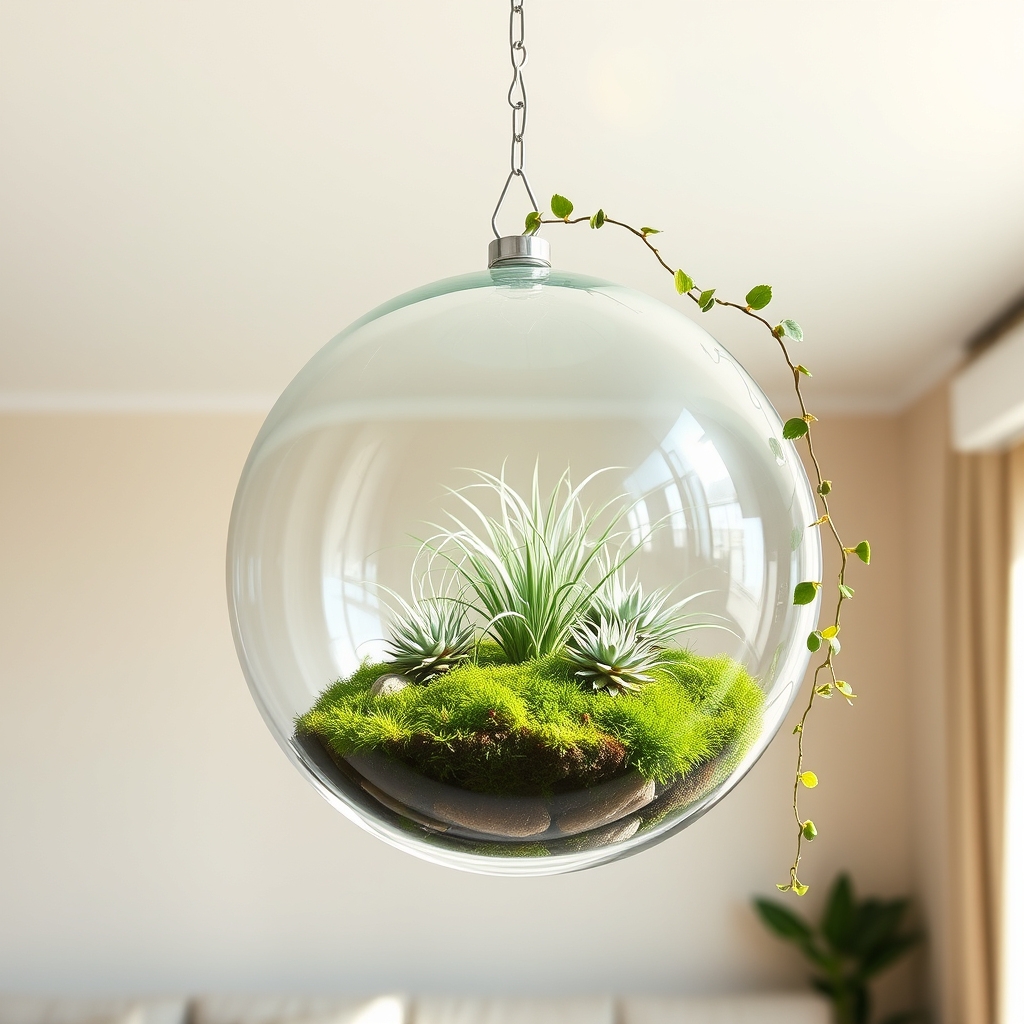
Hanging Orb Green Havens are a stunning and innovative way to bring greenery into your living space. These spherical glass containers, often suspended from the ceiling or mounted on stands, create a floating garden effect that adds a touch of whimsy and elegance to any room. Designed to house small plants like air plants, succulents, or moss, these orbs provide a unique environment where plants can thrive with minimal maintenance, making them ideal for both novice and experienced plant enthusiasts.
The open design of these hanging orbs allows for easy access to water and care for the plants while ensuring proper air circulation to prevent moisture buildup. Their transparent structure also offers a 360-degree view of the miniature ecosystem inside, turning each orb into a mesmerizing focal point. Whether hung in a cluster for a dramatic effect or as a single statement piece, Hanging Orb Green Havens effortlessly blend nature with modern decor, transforming spaces into serene, green retreats.
Vintage Teacup Mini Garden
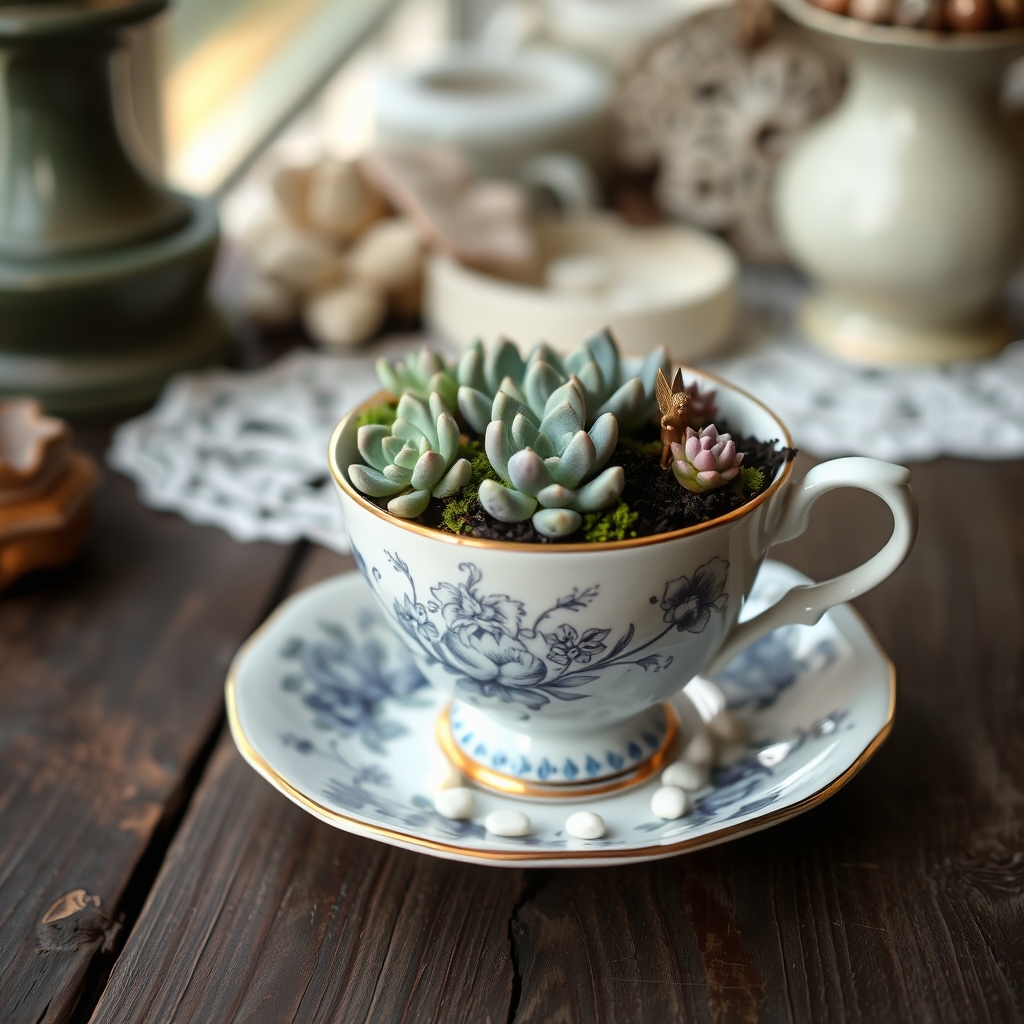
A Vintage Teacup Mini Garden is a charming and creative way to bring a touch of greenery into small spaces using repurposed vintage teacups. These delicate porcelain or ceramic cups, often adorned with intricate patterns, serve as unique containers for tiny plants, creating a whimsical mini garden that adds a nostalgic flair to any home decor. This idea is perfect for those who love vintage aesthetics and want to incorporate sustainable, upcycled elements into their indoor gardening projects.
To create a Vintage Teacup Mini Garden, start by selecting a teacup with a design that resonates with your style, ensuring it has no cracks to prevent leakage. Add a layer of small pebbles or gravel at the bottom for drainage, followed by a thin layer of activated charcoal to keep the environment fresh. Then, fill the cup with potting soil and plant small succulents, moss, or air plants that thrive in confined spaces, finishing with decorative elements like tiny figurines or pebbles for a personalized touch.
These mini gardens are ideal for windowsills, desks, or as centerpieces, offering a low-maintenance way to enjoy nature indoors. They also make thoughtful, handmade gifts for friends and family, combining the charm of vintage items with the beauty of living plants. With minimal care, such as occasional watering and indirect sunlight, a Vintage Teacup Mini Garden can flourish and bring joy for a long time.
Modern Geometric Container Design
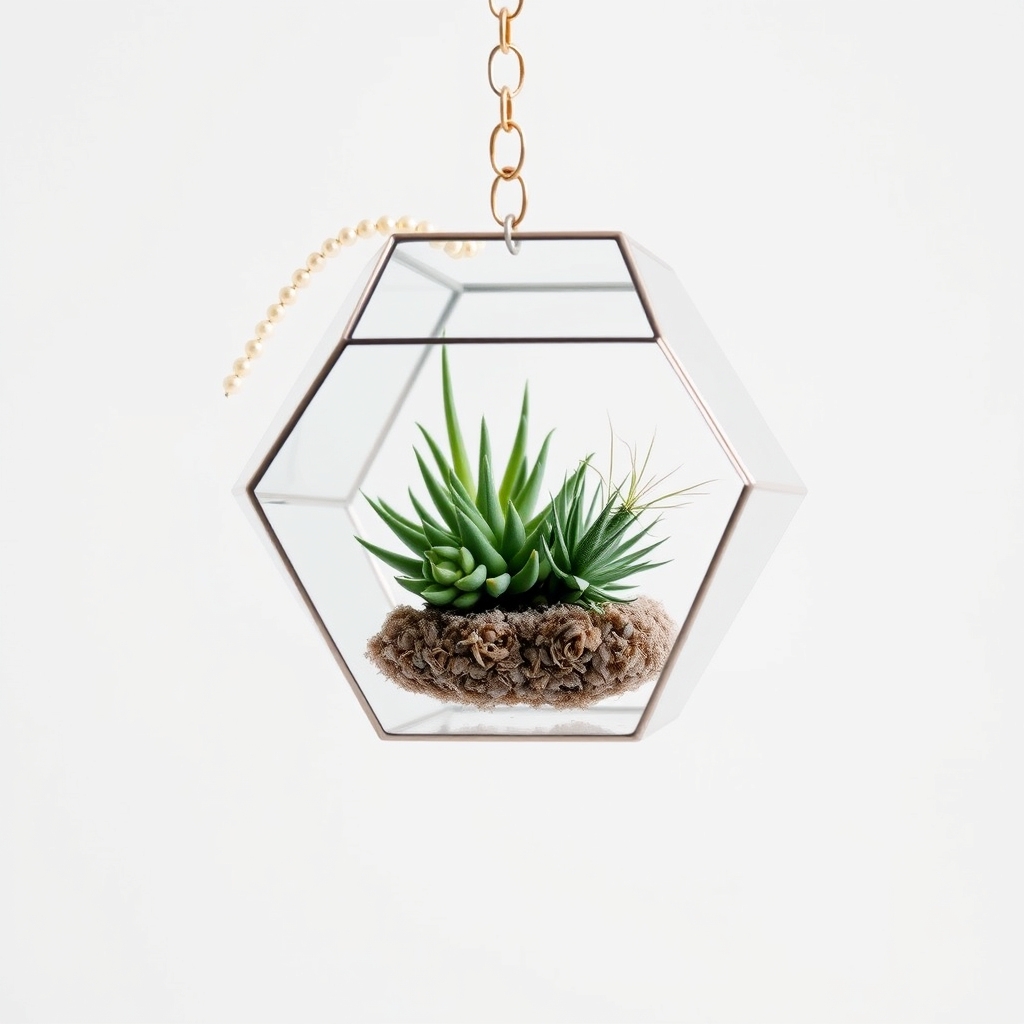
Modern geometric container design has become a popular trend in the world of open terrariums, offering a sleek and contemporary aesthetic that complements a variety of interior styles. These containers often feature clean lines, sharp angles, and shapes such as hexagons, cubes, or pyramids, crafted from materials like glass, metal, or acrylic. The minimalist design of geometric containers allows the natural beauty of the plants and other elements within the terrarium to take center stage, creating a striking visual contrast between the structured frame and the organic contents.
These containers are not only visually appealing but also functional, as their open design provides ample airflow for plants that thrive in drier conditions, such as succulents and air plants. The geometric shapes can be hung, placed on tabletops, or even mounted on walls, making them versatile for small spaces or modern decor schemes. Additionally, the transparency of glass containers often used in this style enhances the illusion of floating greenery, adding a touch of elegance to any room.
The rise of modern geometric container design reflects a broader movement toward blending nature with cutting-edge design, appealing to those who appreciate both artistry and the calming presence of plants. Whether used as a standalone piece or grouped together for a dynamic display, these terrariums bring a sense of sophistication and creativity to indoor gardening. Their unique shapes and structures inspire endless possibilities for customization, allowing enthusiasts to experiment with different plant arrangements and decorative accents.
Desert-Inspired Succulent Setup
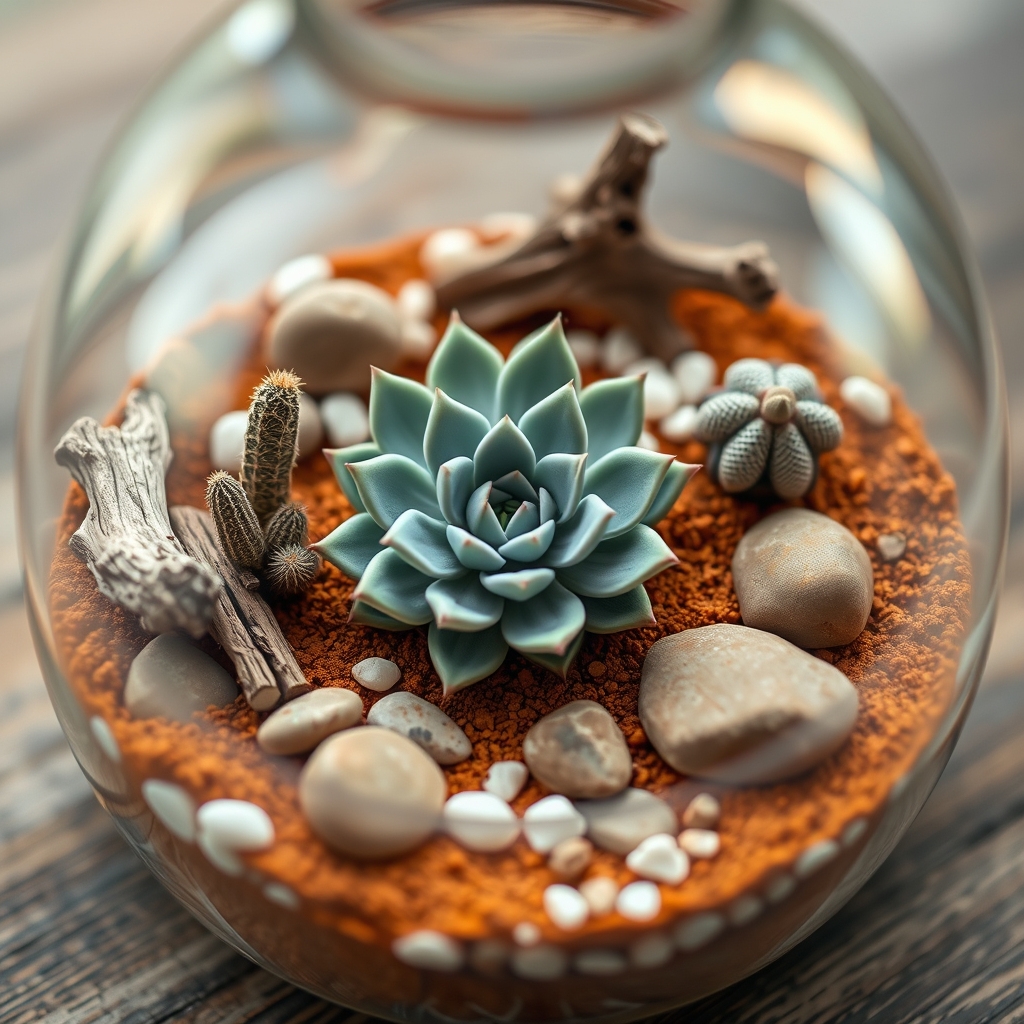
A desert-inspired succulent setup is a fascinating way to bring the arid beauty of a desert landscape into your home through an open terrarium. This design focuses on mimicking the harsh, dry conditions of a desert by using succulents and cacti, which thrive in low-water environments. The setup typically features a shallow glass container filled with a sandy or gravelly substrate to replicate the desert floor, providing excellent drainage for these drought-tolerant plants.
To create this look, select a variety of small succulents and cacti with different shapes, textures, and colors, such as Echeveria, Haworthia, or small barrel cacti, to add visual interest. Arrange them thoughtfully, leaving space between plants to avoid overcrowding and to evoke the sparse, open feel of a desert. Accent the setup with natural elements like small rocks, driftwood, or even tiny figurines of desert animals to enhance the theme and create a miniature desert ecosystem.
Care for this terrarium is minimal, as succulents and cacti require infrequent watering—often just once every two to three weeks, depending on the humidity and light conditions. Place the terrarium in a bright spot with indirect sunlight to prevent scorching, and make sure the container allows for air circulation to avoid moisture buildup. This low-maintenance setup not only adds a unique aesthetic to your space but also serves as a reminder of the resilient beauty of desert landscapes.
Tropical Fern and Moss Escape

The Tropical Fern and Moss Escape is an enchanting theme for an open terrarium that brings the lush, vibrant essence of a tropical rainforest into your home. This design focuses on creating a miniature ecosystem dominated by ferns and mosses, which thrive in the humid, shaded conditions reminiscent of their natural habitat. These plants are ideal for open terrariums as they prefer good air circulation while still benefiting from the enclosed environment’s ability to retain some moisture.
To craft this escape, start with a layer of drainage material like pebbles or activated charcoal at the base of a glass container to prevent root rot. Add a substrate of potting mix suitable for ferns, which should be rich in organic matter. Select a variety of small ferns, such as maidenhair or button ferns, and pair them with different types of moss to create texture and depth. Position the plants to mimic a natural forest floor, with taller ferns at the back and moss spreading across the base, and mist regularly to maintain humidity without overwatering.
This terrarium theme not only serves as a stunning visual centerpiece but also evokes a sense of tranquility and connection to nature. Placing it in a spot with indirect sunlight will help the plants flourish, transforming a small corner of your space into a verdant tropical retreat.
Whimsical Fairy Garden Scene
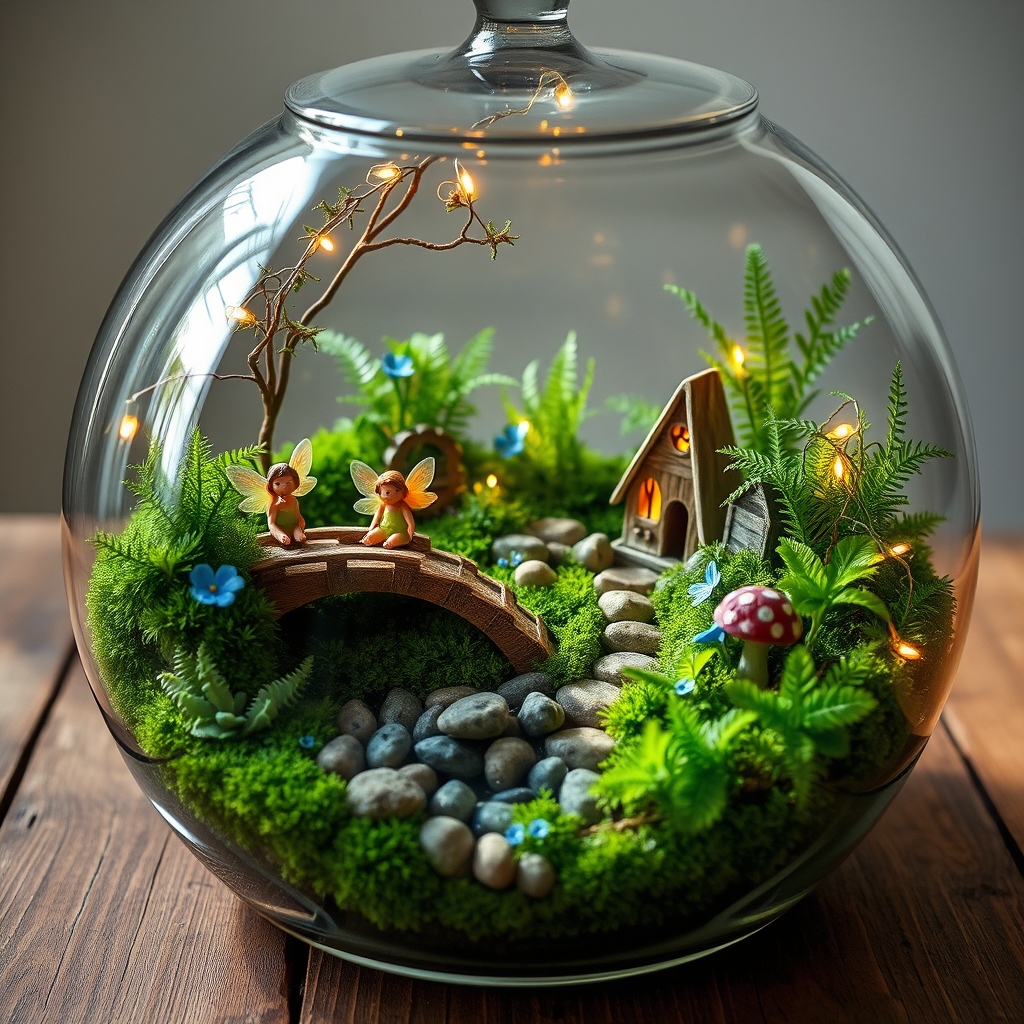
Creating a whimsical fairy garden scene in an open terrarium brings a touch of magic and enchantment to your space. This theme transforms the glass container into a miniature fantasy world, complete with tiny fairies, charming pathways, and mystical elements. Start by layering the base with pebbles for drainage, followed by a thin layer of activated charcoal to keep the environment fresh, and then add a suitable potting mix for small plants like moss, ferns, or baby tears that mimic a lush, forested fairy domain.
To enhance the fairy tale vibe, incorporate miniature figurines of fairies, gnomes, or woodland creatures, placing them strategically among the plants. Add small accessories like a tiny bench, a pebble pathway, or even a miniature mushroom house to create a storybook setting. Twinkling fairy lights or small LED candles can add a magical glow, especially in the evening, while bits of colored glass or tiny mirrors can simulate a sparkling pond or magical portal. This setup not only captivates the imagination but also serves as a delightful focal point in any room.
Keep the terrarium in a spot with indirect sunlight to maintain the health of the plants, and mist occasionally to mimic the dewy, enchanted atmosphere of a fairy garden. This whimsical scene is perfect for sparking creativity and wonder, making it an ideal project for both children and adults who wish to escape into a miniature world of fantasy.
Coastal Pebble and Air Plant Mix
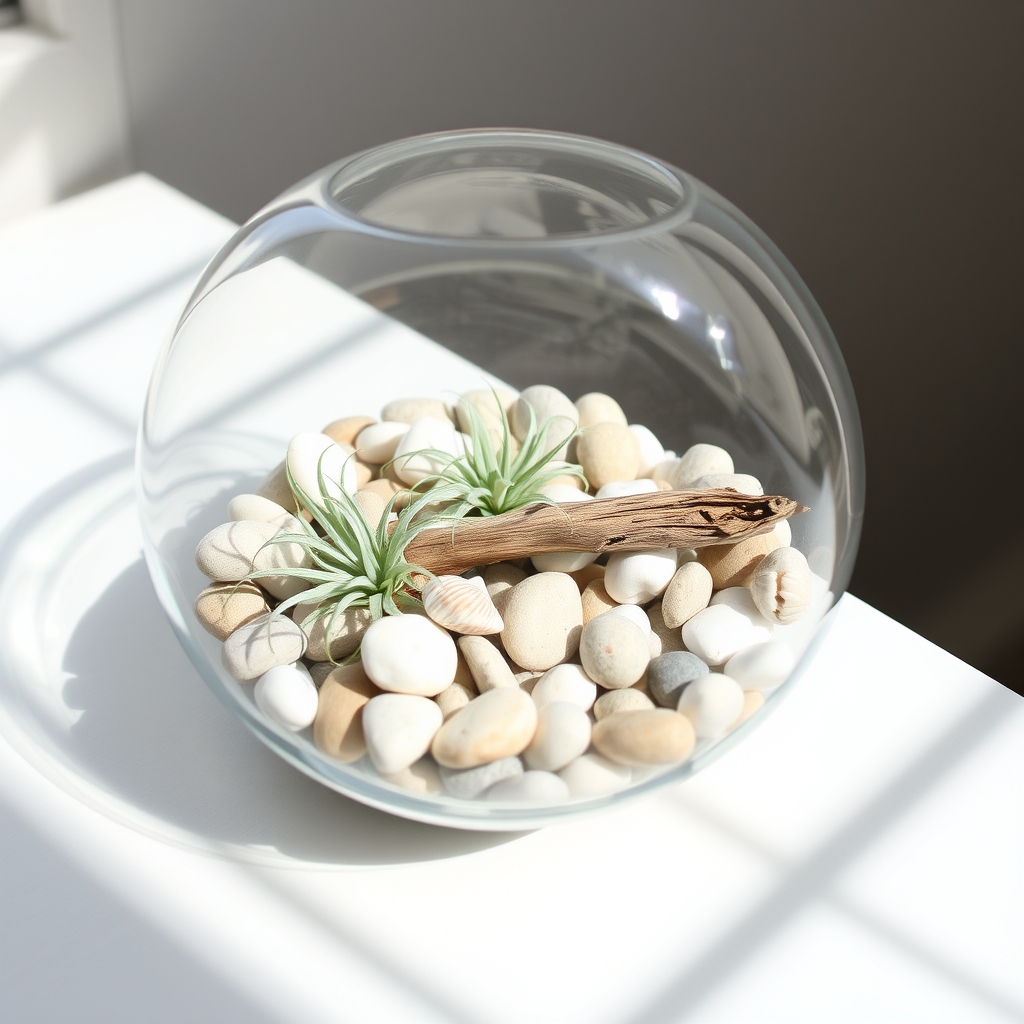
The Coastal Pebble and Air Plant Mix is a stunning and low-maintenance option for an open terrarium, inspired by the serene beauty of coastal landscapes. This design incorporates smooth, natural pebbles in shades of gray, white, and beige to mimic a beach shoreline, paired with air plants (Tillandsia) that thrive without soil. The combination evokes a breezy, seaside vibe, making it a perfect choice for those who want a minimalist yet evocative display in their home or office.
To create this terrarium, start with a shallow glass container and layer the bottom with coastal pebbles to form a stable base. Nestle a few air plants among the pebbles, ensuring they have enough space for air circulation, as these plants absorb moisture and nutrients through their leaves. Add small pieces of driftwood or seashells as accents to enhance the beachy aesthetic, but keep the design simple to maintain the open, airy feel of a coastal scene.
This mix is ideal for beginners, as air plants require minimal care—just a weekly misting or soaking and indirect sunlight. The pebbles provide a clean, natural foundation that doesn’t retain moisture, preventing root rot or mold in the open environment. With its effortless charm, the Coastal Pebble and Air Plant Mix brings a touch of the ocean indoors, offering a calming and rejuvenating focal point.
Upcycled Jar Nature Nook
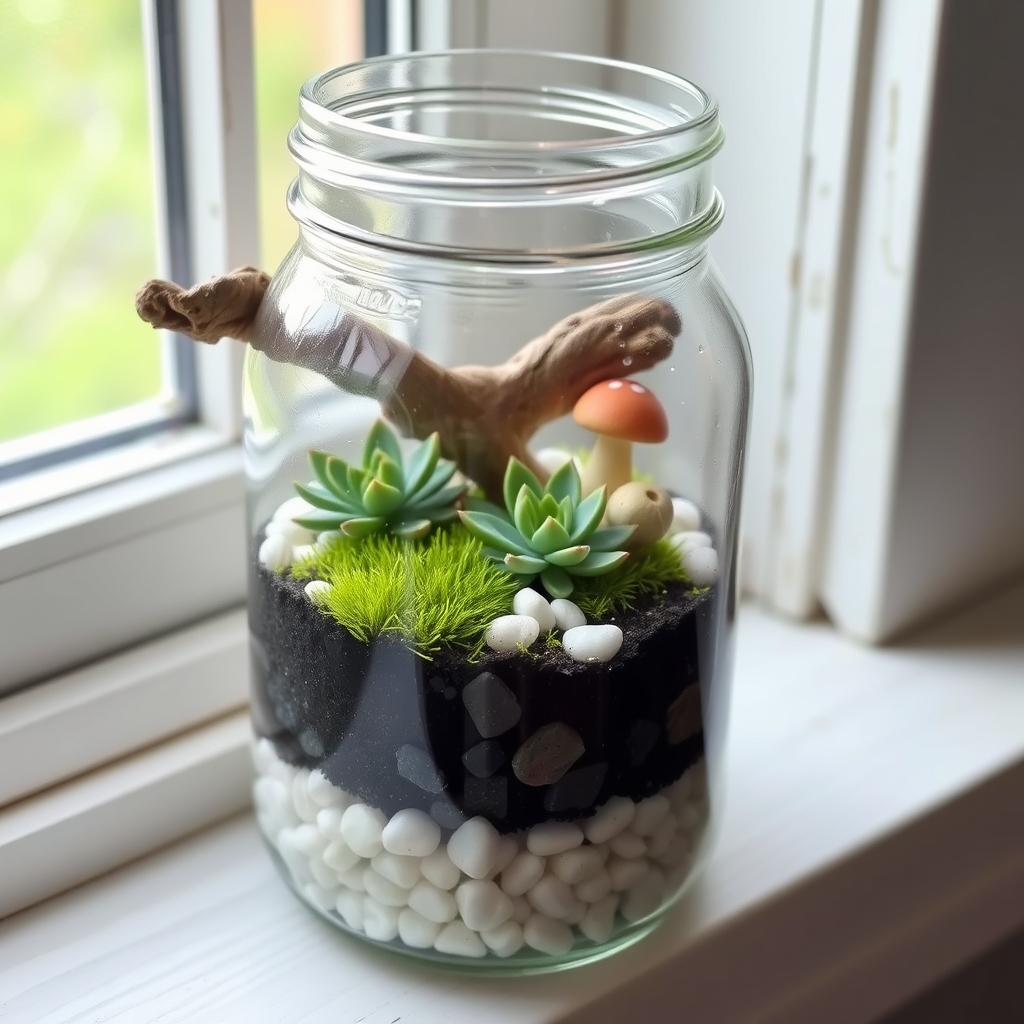
An Upcycled Jar Nature Nook is a delightful way to create a miniature terrarium using repurposed glass jars that might otherwise be discarded. This eco-friendly approach not only gives new life to old containers but also allows you to craft a tiny green space that can brighten up any corner of your home or office. Whether it’s a mason jar, a pickle jar, or an old jam container, these vessels can be transformed into charming habitats for small plants like moss, air plants, or succulents.
To create your nature nook, start by thoroughly cleaning and drying the jar to guarantee a healthy environment for your plants. Add a layer of pebbles or small rocks at the bottom for drainage, followed by a thin layer of activated charcoal to keep the terrarium fresh by preventing mold and bacteria growth. Then, add a substrate suitable for your chosen plants, such as potting soil or sphagnum moss, and carefully plant your greenery, arranging them to create a visually appealing mini landscape. Finish with decorative elements like tiny figurines, driftwood, or colorful stones to personalize your creation.
This simple project is perfect for beginners and seasoned gardeners alike, offering a sustainable way to bring nature indoors. Place your upcycled jar terrarium on a windowsill, desk, or shelf where it can receive indirect sunlight, and enjoy the calming presence of your own little ecosystem. With minimal maintenance, such as occasional watering and trimming, your nature nook will thrive as a unique, green focal point in your space.
